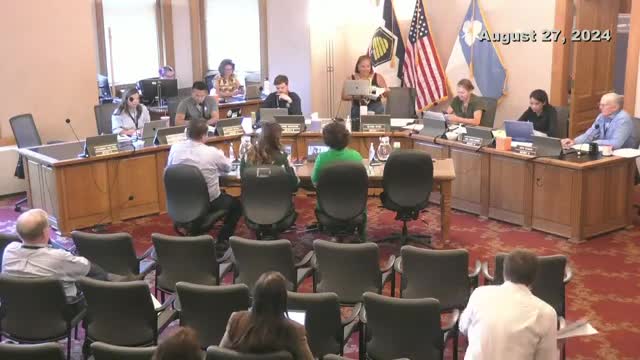City explores bold changes to residential zoning laws
August 27, 2024 | Salt Lake City Council and RDA Board meetings, Salt Lake City, Salt Lake County, Utah
This article was created by AI summarizing key points discussed. AI makes mistakes, so for full details and context, please refer to the video of the full meeting. Please report any errors so we can fix them. Report an error »

In a recent government meeting, city officials provided an update on the R1 zoning district study, responding to a request from the city council aimed at increasing housing options and residential density in these areas. The briefing, led by Planning Director Nick Norris, outlined the historical context of R1 zoning, which dates back to the city’s first comprehensive zoning code established in 1927.
The study aims to explore various options for enhancing housing within R1 zones, particularly along major streets. Key considerations include aligning with city policies on land use, public transportation, and historic preservation. The presentation highlighted that a significant portion of existing lots in R1 zones do not meet current minimum lot size requirements, with 35% of lots failing to comply. This raises questions about potential zoning changes that could facilitate the development of more housing.
One proposed change is the consolidation of existing R1 zones to simplify regulations and potentially increase housing supply. The study also examined the implications of reducing minimum lot sizes and widths, which could allow for more subdivisions and the creation of smaller homes. Notably, the concept of flag lots—parcels that are accessed via a narrow strip of land—was discussed, with current regulations making their creation rare.
Additionally, the meeting addressed the possibility of allowing attached housing in R1 zones, which could help address the shortage of \"missing middle\" housing types. The officials emphasized that updating R1 zoning regulations could lead to a more diverse housing stock, catering to a wider range of residents.
The discussions underscored the city's ongoing efforts to adapt its zoning laws to meet contemporary housing needs while balancing community interests and historical preservation. As the study progresses, city officials will continue to evaluate the potential impacts of these zoning changes on the local housing market and community dynamics.
The study aims to explore various options for enhancing housing within R1 zones, particularly along major streets. Key considerations include aligning with city policies on land use, public transportation, and historic preservation. The presentation highlighted that a significant portion of existing lots in R1 zones do not meet current minimum lot size requirements, with 35% of lots failing to comply. This raises questions about potential zoning changes that could facilitate the development of more housing.
One proposed change is the consolidation of existing R1 zones to simplify regulations and potentially increase housing supply. The study also examined the implications of reducing minimum lot sizes and widths, which could allow for more subdivisions and the creation of smaller homes. Notably, the concept of flag lots—parcels that are accessed via a narrow strip of land—was discussed, with current regulations making their creation rare.
Additionally, the meeting addressed the possibility of allowing attached housing in R1 zones, which could help address the shortage of \"missing middle\" housing types. The officials emphasized that updating R1 zoning regulations could lead to a more diverse housing stock, catering to a wider range of residents.
The discussions underscored the city's ongoing efforts to adapt its zoning laws to meet contemporary housing needs while balancing community interests and historical preservation. As the study progresses, city officials will continue to evaluate the potential impacts of these zoning changes on the local housing market and community dynamics.
View full meeting
This article is based on a recent meeting—watch the full video and explore the complete transcript for deeper insights into the discussion.
View full meeting

